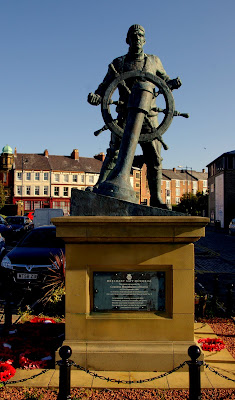. .
.many of the buildings on Pilgrim Street, of which this is one, are either empty, derelict or otherwise crying out for redevelopment.
.Pilgrim Street was once a much more important and illustrious
thoroughfare, running northwards within the old city walls and leading to the long-gone Pilgrim Gate on the north wall of the City. The street's name has two
probable origins; one being that pilgrims passed through Newcastle on the way to visit St Mary's Chapel in
Jesmond, now an inner city suburb ; the other being that the friary of
Greyfriars nearby contained relics of St Francis, the founder of the order, and pilgrims travelled up Pilgrim Street to see them.











